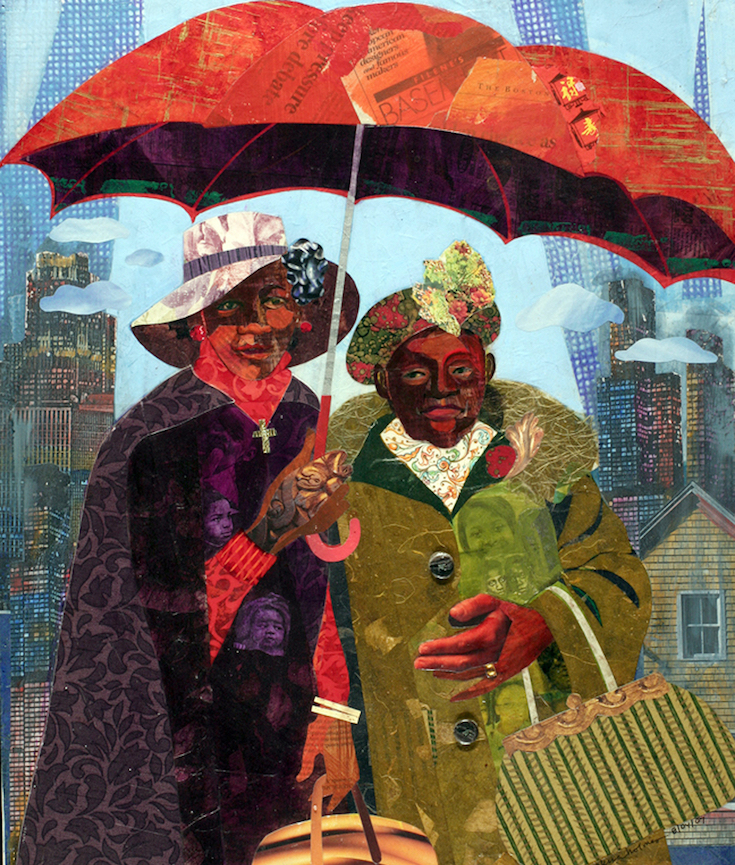[dropcap]Ostensibly[/dropcap] self-conscious in the genre of representational art, the Roxbury native deftly salutes African-American luminaries who preceded her with stunning vibrancy — extending a clear-eyed perspective and a verve that serve to open new imaginative and intellectual vistas. She also weds herself to the idea that art should carry with it crisp social commentary, editorials on the state of black America.
Not since the Harlem Renaissance during the 1920s and ’30s has there been a high-profile movement defining black culture as that movement so forcefully did. The brilliant works of William H. Johnson, Archibald Motley and Jacob Lawrence are examples of the epic quality of painting produced during that era.
[mc4wp_form id=”6042″]



 Sufficient Grace | Ekua Holmes
Sufficient Grace | Ekua Holmes
 All Weather Friends | Ekua Holmes
All Weather Friends | Ekua Holmes
The Harlem Renaissance took place in Harlem, New York, spanning the 1920s. During the time, it was known as the “New Negro Movement”, named after the 1925 anthology by Alain Locke. The Movement also included the new African-American cultural expressions across the urban areas in the Northeast and Midwest United States affected by the African-American Great Migration, of which Harlem was the largest. The Harlem Renaissance was considered to be a rebirth of African-American arts. Though it was centered in the Harlem neighborhood of the borough of Manhattan in New York City, many francophone black writers from African and Caribbean colonies who lived in Paris were also influenced by the Harlem Renaissance.
The Harlem Renaissance is generally considered to have spanned from about 1918 until the mid-1930s. Many of its ideas lived on much longer. The zenith of this “flowering of Negro literature”, as James Weldon Johnson preferred to call the Harlem Renaissance, took place between 1924 (when Opportunity: A Journal of Negro Life hosted a party for black writers where many white publishers were in attendance) and 1929 (the year of the stock market crash and the beginning of the Great Depression) (Wikipedia).



You must be logged in to post a comment.